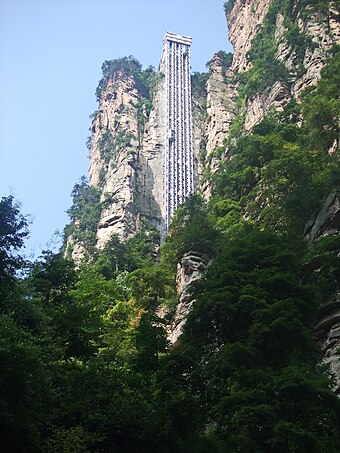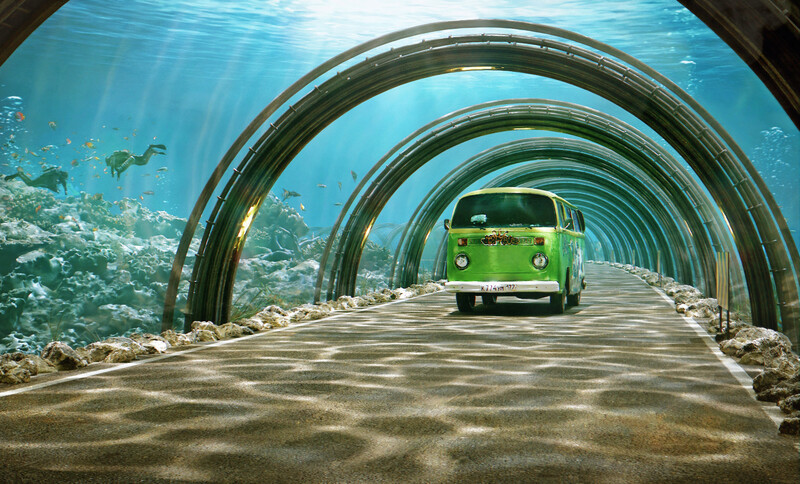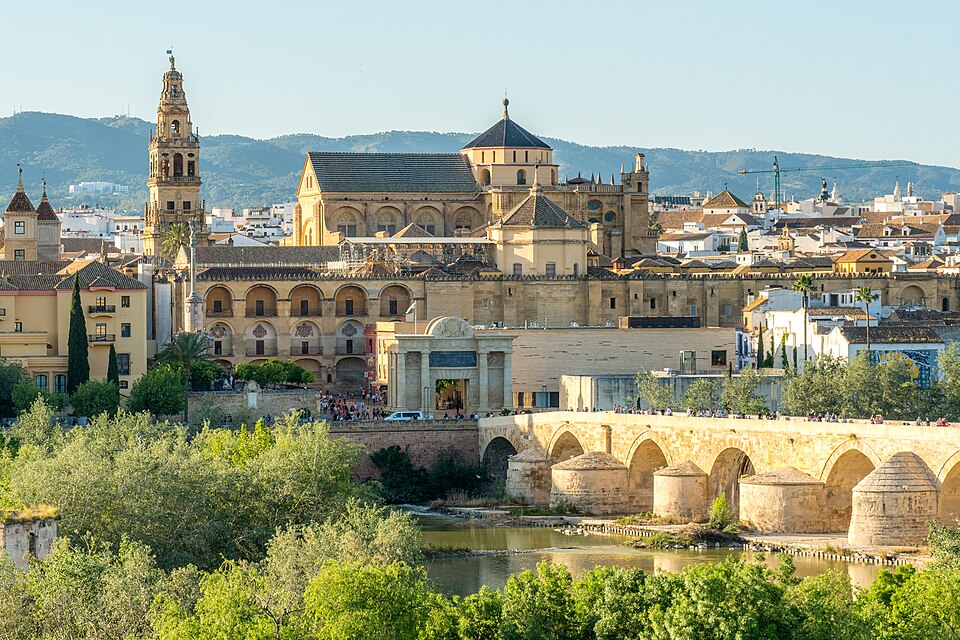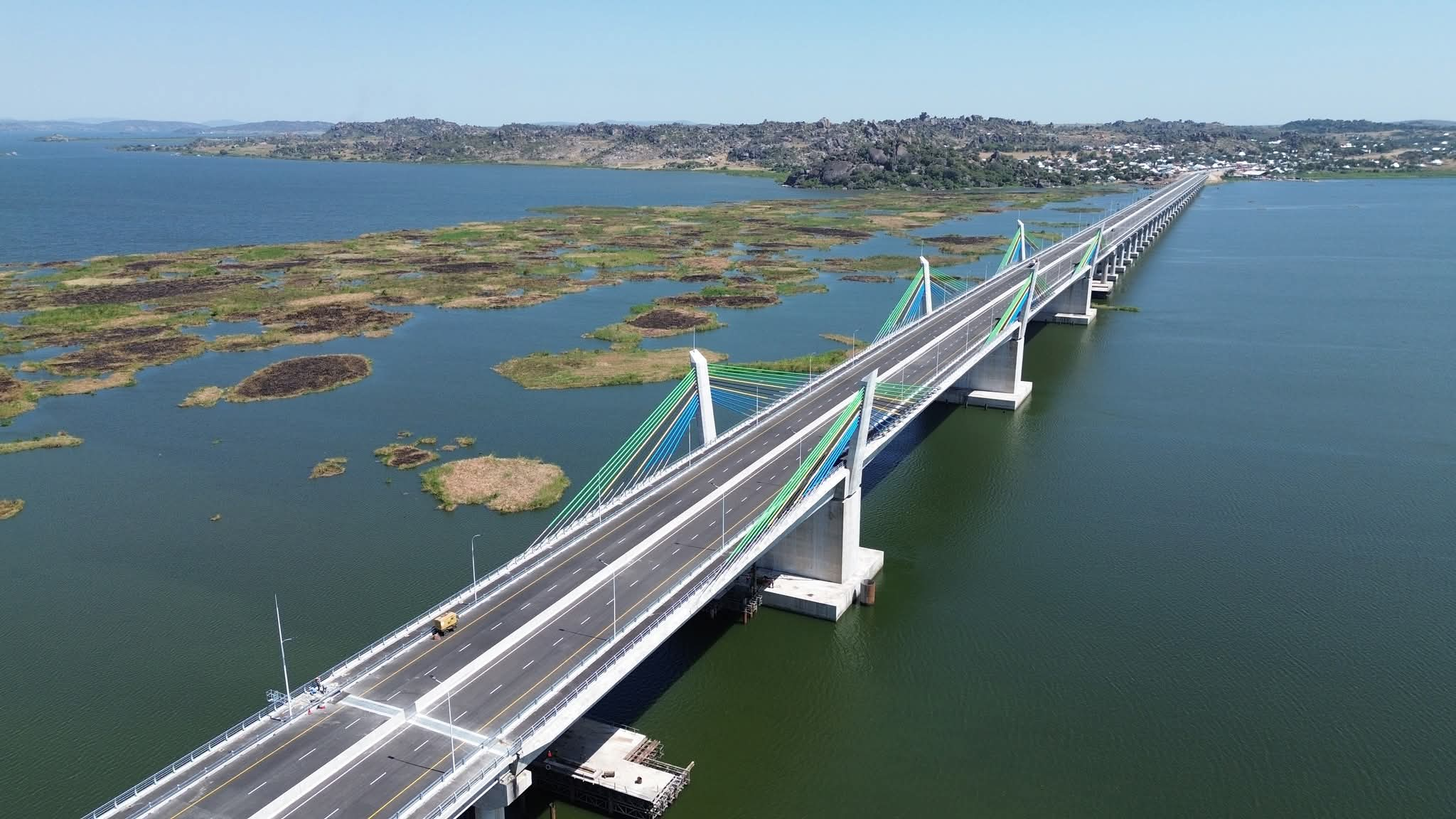AMAZING INFRASTRUCTURE: The Bailong Elevator in China

Did you know that the Bailong Elevator is the world's tallest outdoor elevator and is purported to be the fastest passenger elevator with the largest loading capacity?
The Zhangjiajie National Forest Park in the Hunan Province of the People's Republic of China is famous for the spectacular sandstone pillars that rise up from the forest floor, the tallest reaching heights of more than 3,000 feet. Think of the floating Hallelujah Mountains in Avatar, and you’ll have a fairly good mental image.
Among these pillars rises another lofty structure, albeit one of steel and glass: the Bailong Elevator, which in Chinese literally means a Hundred Dragons Elevator. It is a glass double-deck elevator built onto the side of a cliff in the Wulingyuan area of Zhangjiajie, and it is undeniably an impressive feat of engineering.
The elevator is 326 m (1,070 ft) high and was recognised by Guinness World Records as the world's tallest outdoor elevator on 16 July 2015 and is purported to be the fastest passenger elevator with the largest loading capacity.
Construction of the elevator began in October 1999 after an investment of about $20 million, and it was opened to the public by 2002. The elevator was built into the quartz sandstone cliff face, with the lower 505 feet embedded inside the mountain wall, and the upper 565 feet consisting of exposed steel derrick. The three elevators run in parallel, offering dizzying views of the sandstone pillars and surrounding mountains and forest.
Following a speed upgrade in 2015, the cars now make the ascent in just one minute and 32 seconds. And, incidentally, it takes 68 minutes and 26 seconds to free-climb the upper exposed section of the elevator, but only if you’re crazy and French.
Each elevator has a carrying capacity of 4,900 kilograms, with 50 passengers traveling in each car. All of which means that the Bailong Elevator is not only the world’s tallest outdoor elevator, but also the world’s tallest double-deck sightseeing elevator and the world’s fastest passenger traffic elevator with the biggest carrying capacity.
The environmental effects of the elevator have been a subject of debate and controversy, as the Wulingyuan area was designated a World Heritage Site in 2002. Operations were stopped for 10 months in 2002–2003, reportedly due to safety concerns, not environmental ones, because of its location in an earthquake-prone area (the lift cars are all now fitted with earthquake detectors to allow a quick evacuation in case of a quake).
Even more controversial was the idea of building a massive steel elevator in a UNESCO World Heritage Site and protected national park. Apart from all the construction concerns, environmentalists also argued that it would draw even more tourists to an already popular site, putting further pressure on the park and its infrastructure.
The elevator’s supporters have countered this claim with a fairly reasonable argument of their own: the elevator has greatly reduced the damage to mountain trails, as tourists can now bypass them altogether by taking the lift.
Furthermore, they argue, visitors can now come to the park as a day trip thanks to the greatly reduced travel time. Previously, tourists had to drive for more than three hours along what was at times a dangerous mountain road to access different parts of the park. Now, they just have to queue up for a one-and-a-half minute elevator ride. With tourists no longer needing to stay overnight, many hotels and guesthouses have been removed, further reducing the environmental impact of tourism in the park.
Sources: Wikipedia | Atlas Obscura
#penglobalfactfile


_1755775186.jpg)
